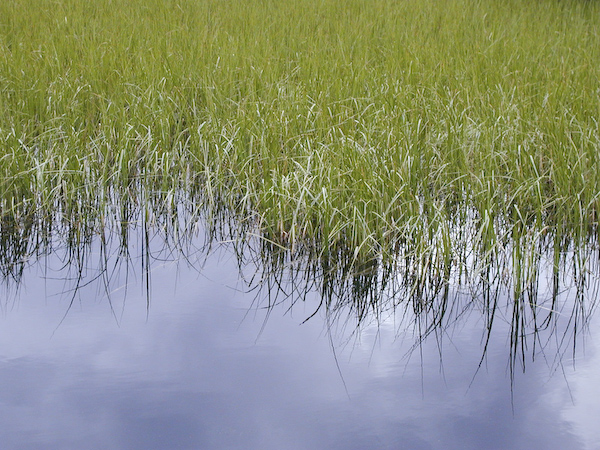Reducing Scene Complexity to Abstract Forms
On a day when I feel the urge to exercise my camera, but cannot see the grand vistas, I turn to the reachable microcosms around me. Although I could easily have used a wide-angle lens and included more features in the foreground and background, I chose to narrow my field of view to reduce my subject and composition to a few simple elements: water, clouds, and grass.
The result is something of a “mood picture”. Colors are muted; the dark gray clouds reflect ominously in the water, and they create a rather flat lighting for the green grasses, lowering their saturation and contrast. A shallow depth-of-field puts the distant grass into a blur, drawing the viewer’s attention to the interface between the grass and the water. The grass appears detailed, but the detail is more apparent in the reflections than in the actual grass. With the sky in the bottom of the frame and foliage at the top, a first impression might be that this photo is upside down. The water is not perfectly flat, and that works fine here as it adds a little texture to the edges of the clouds reflected therein, and plays tricks with the otherwise smooth lines of the grass reflections. Most striking for me is the curved shape of the interface between water and grass.
I’m explaining the elements that “worked” in this image, but they were not planned or anticipated. I was fortunate to have my eyes and my mind receptive and looking in this direction. I had no specific agenda (as in “I will take a picture of X”); rather, I was open to seeing what the camera would show me and then I let my aesthetic eye dictate how and where I would aim the camera. Reducing the number of elements helped contribute to a simple composition of abstract forms.
These basic concepts can be widely applied to a number of situations where the grand vista or intended subject isn’t visible; in the absence of what we’re looking for, there’s always something around to photograph, and letting go of the original goal can help unleash your creativity.

Tip of the Week
2007.08.13

